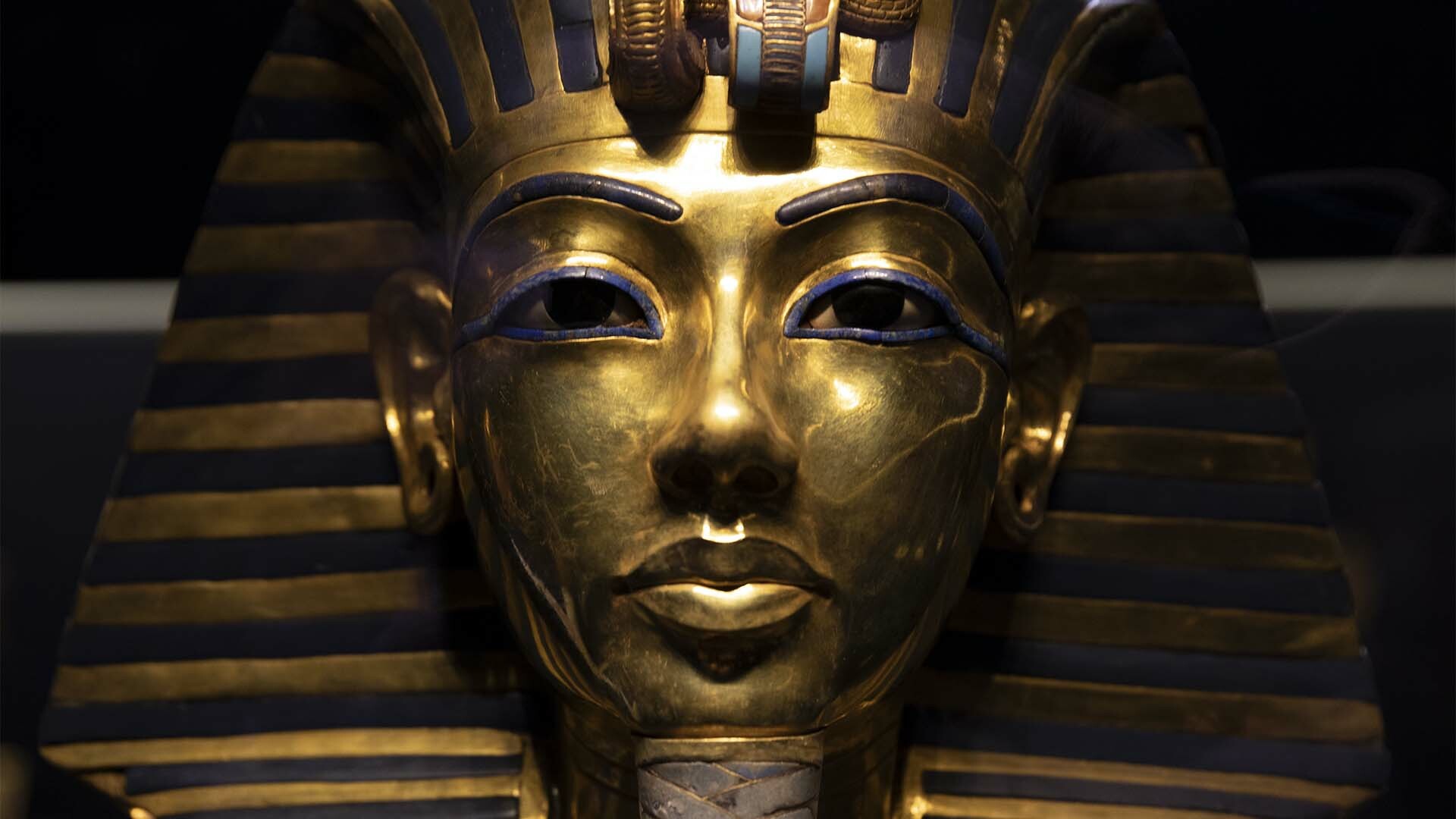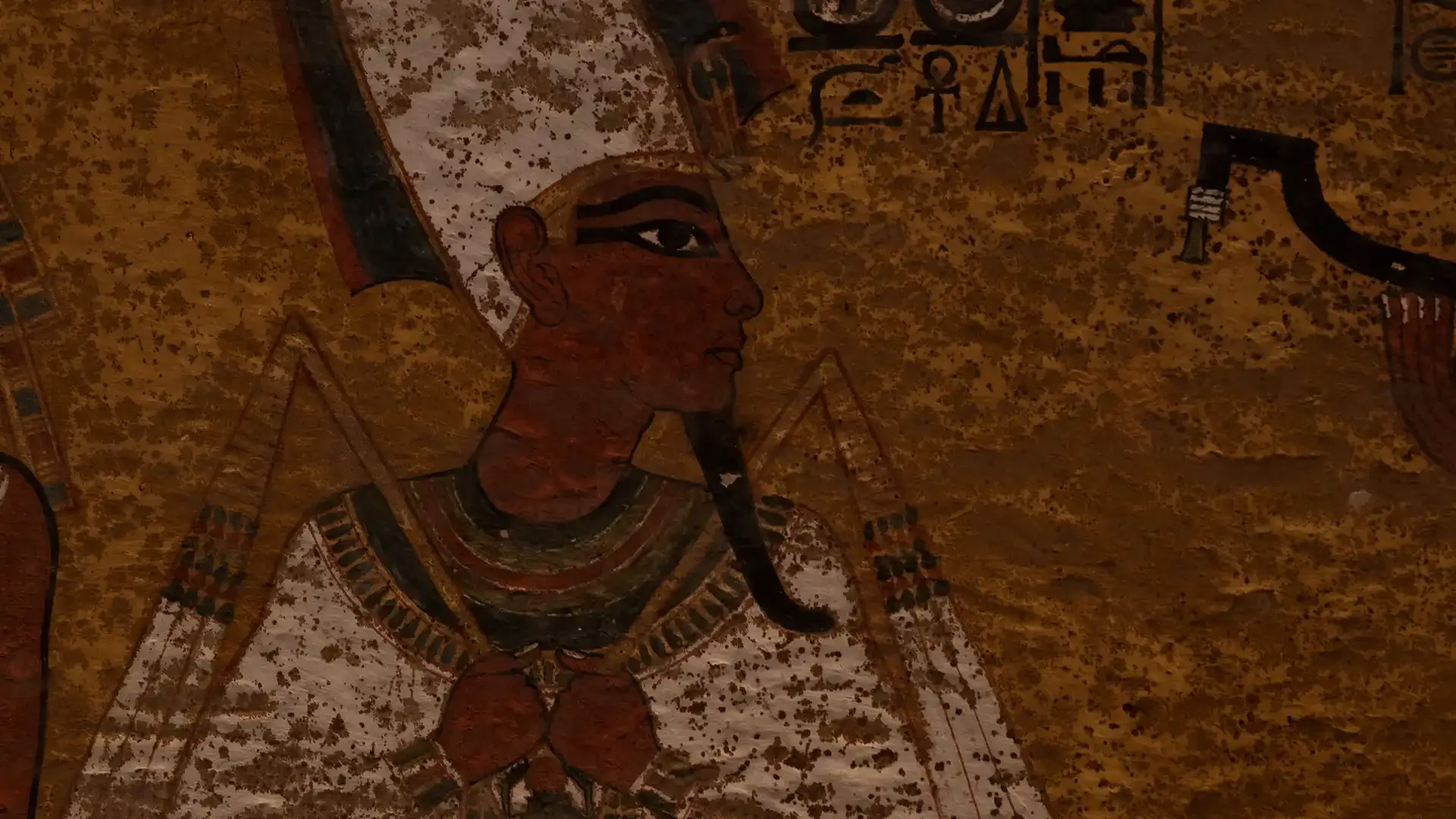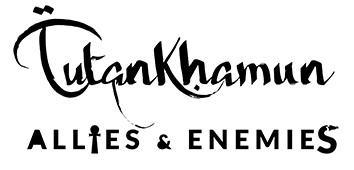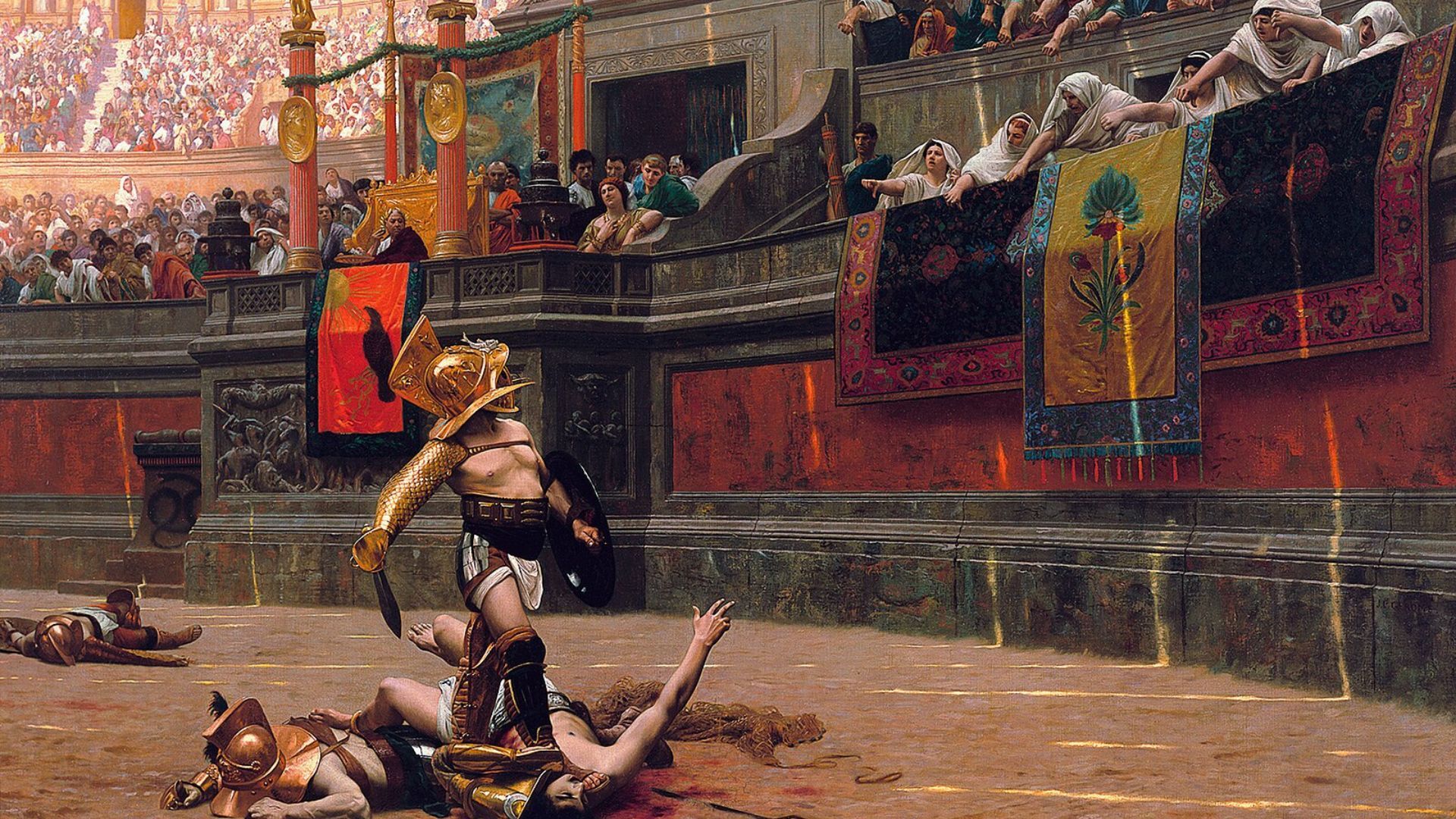
King Tutankhamun of Egypt, often known as King Tut, began his rule at eight or nine years old. While many elements of his life and reign are still a mystery, this boy king has long fascinated people around the world.
Now, with experts on the case and new technological tools at their disposal, we’re learning more than ever about this young pharaoh. In “Tutankhamun: Allies & Enemies” on PBS, you’ll get an inside look at the mysteries of King Tutankhamun’s family, death, tomb and more. Let’s take a look at what we know — and what we’re still discovering.
Who Was King Tut?
King Tut was a pharaoh who ruled Egypt from 1332 to 1323 BCE. He was only eight or nine years old when he ascended to the throne of Egypt as a child.
But the boy king wasn’t on his own. He was guided by several key figures, including:
- Ay, the Grand Vizier and potentially Tut’s maternal grandfather.
- Horemheb, the commander-in-chief of the military.
Despite the boy king’s importance in our history today, his reign was short and relatively unimportant in ancient Egypt. In fact, few know of his biggest achievement in life: He restored the cult of Amun-Ra and returned Egypt to polytheism. This overturned the religious reforms of his father, Akhenaten.
Why Is King Tut Famous?
So, why is King Tutankhamun so well known across the world? When archaeologist Howard Carter and his expedition discovered the tomb and mummy in 1922, experts quickly realized that this represented a wealth of insights into the history of ancient Egypt.
Out of 64 tombs in the Valley of the Kings, this was the only one discovered almost intact — and that’s not to mention the particularly ornate funerary mask that has fascinated people for decades.
What Did King Tut Look Like?
We know King Tutankhamun was about 18 or 19 when he died, but that doesn’t mean he looked just like a modern teenager. As you’ll see in “Tutankhamun: Allies & Enemies,” experts are still finding new clues and using different technologies to learn about his appearance.
For example, based on his mummy, we know the boy king had a clubfoot. This would have caused him pain when walking or standing, possibly impacting his stance, body language and more.
In the show, you’ll also see experts use CT scans and 3D facial reconstruction to shed some light on his features. To do this, an anthropologist uses scans of Tut’s skull to create a three-dimensional model, which then goes to a 3D printer. From there, experts use tissue marker measurements to build up a face muscle by muscle.
How Did King Tut Die?
The experts in “Tutankhamun: Allies & Enemies” have many theories surrounding King Tut’s death. While nothing is 100% confirmed, there are a few popular theories.
King Tut likely died at age 18 or 19 around 1324 BCE. Experts have various ideas about what caused this. For example, there is a small bone fragment on the inside of his skull that initially led some historians to believe that King Tut was murdered by a blow to the back of his head. However, this damage could have also been caused during mummification or excavation, and most experts agree that he was not murdered.

One of the most compelling points of evidence surrounding King Tut’s death is the presence of a fracture at his kneecap, which doesn’t have any signs of healing, indicating it happened shortly before his death. Chariots were discovered in King Tut’s tomb, and this type of injury could have been sustained from a high-velocity fall from a chariot, although this theory has not been confirmed.
Another theory around King Tut’s death involves the presence of a form of malaria discovered in his mummy. Malaria could have been the cause or a contributor to his death. It is likely that his death was a combination of these factors.
Who Succeeded King Tut?
We know of two key figures that advised King Tut during his lifetime: Ay, the Grand Vizier and likely the father of Queen Nefertiti, and Horemheb, the commander-in-chief of the Egyptian army.
After King Tut’s death, Horemheb was away waging war against the Hittites, so Ay ascended to the throne. Ay ruled as pharaoh for three years until his death, and upon his death, Horemheb became pharaoh and would rule for nearly 30 years.
King Tut’s Family
Pharaoh Akhenaten, King Tut’s Father
Akhenaten, King Tut’s father, reigned over Egypt for about 17 years until King Tut took over after his death.
King Akhenaten was a controversial figure in his time for moving the capital to Amarna. He also revolutionized the ancient Egyptian religion by eliminating all the gods of the Egyptian pantheon and elevating Aten, previously a minor god, to the role of the only and supreme god.
The decision to change the state religion was extremely controversial and not well received by the public, and was quickly reversed after King Tut ascended to the throne.
King Tut’s Mother
The identity of King Tut’s mother is still up for debate, but there are three primary suspects: Kiya, Queen Nefertiti and a figure known as the “younger lady.” Kiya and Nefertiti were both known wives of Akhenaten during his lifetime, so it is plausible that either of them could have been King Tut’s mother.
Additionally, an unidentified mummy of a woman was discovered inside tomb KV35 alongside the mummy of Queen Tiye, King Tut’s grandmother. DNA evidence suggests that this unidentified mummy may have been the mother of King Tut, although this topic is still hotly debated among Egyptologists.
King Tut’s Grandparents
King Tut’s paternal grandparents were King Amenhotep III and Queen Tiye. Amenhotep III reigned during the first half of the 14th century BCE, and he may have been one of the most successful pharaohs in ancient Egyptian history, reigning during a period of peace and prosperity at the height of Egyptian civilization.

The PBS 'What to Watch' Weekly Newsletter
What to Watch delivers the best shows and content PBS has to offer each week.
Who Discovered King Tut’s Tomb?
King Tut’s tomb was discovered in the Valley of the Kings by British archaeologist and Egyptologist Howard Carter and his workmen on November 4, 1922. Carter began an extensive search for the tomb after World War I, when many ancient Egyptian tombs had already been found and King Tut’s was still missing.
About Howard Carter
Howard Carter was born in England on May 9, 1874. From a young age, he expressed a deep interest in Egyptian culture and history. In 1922, when Carter discovered King Tut’s tomb, he had already been immersed in Egyptian antiquities for three decades. He spent a decade excavating the tomb and organizing its contents, which he sent to the Egyptian Museum in Cairo.
What Was Found Inside King Tut’s Tomb
Compared to other royal tombs, King Tut’s tomb was quite small. Despite this, it was loaded with all types of treasure: King Tut’s mummy, gold jewelry, chariots, statues, weapons and clothing. This was everything that he would need for his afterlife.
These discoveries were so crucial because they were remarkably untouched. Experts used this as an example of what other tombs might have been like before they were robbed and otherwise disturbed.

Support your local PBS station in our mission to inspire, enrich, and educate.
Fun Facts About King Tutankhamun of Egypt
Want to learn more about King Tut? Here are five fun facts about Egypt’s famous pharaoh:
#1: He May Have Had Help in Ruling Egypt
While we don’t know for sure who King Tut’s mother was, some experts believe that this mystery woman played a major role in ruling the kingdom. Remember, the boy king was only eight or nine when he took the throne, so it makes sense that his mom might have ruled alongside him for the first few years.
#2: His Name Wasn’t Always Tutankhamun
King Tut’s most notable move in life was shifting Egypt away from monotheism. This also included a name change: from Tutank-aten (the living image of Aten) to Tutank-khamun (the living image of Amun).
#3: He May Have Gone into Battle
King Tut’s tomb included a suit of leather armor. It wasn’t just for show; this armor suggested that, despite being young, the pharaoh may have gone to battle for his people.
#4: His Mummification Was Unique
While there’s a lot to learn from King Tutankhamun’s mummy, one detail you may not have known is that embalmers gave him “ancient Botox.” This involved placing materials under his skin to improve the appearance.
#5: He’s Caused Plenty of Scholarly Debates
Experts have a lot of theories on King Tut’s life, rule and death. We know a lot about him based on his remarkably preserved tomb, but some topics still up for debate include:
- His mother’s identity.
- Whether he was sickly in life.
- How and when he thought about and prepared for his death.
And, of course, exactly how he died.
The Making of "Tutankhamun: Allies & Enemies"









Learn More About Egypt’s Boy King
King Tut may still be shrouded in mystery, but modern science is bringing him back to life in new ways. From the stories his mummy tells to the reconstructed image of his face, we’re closing the gap between history and technology, uncovering new insights about ancient Egypt and its people along the way.
If you want to explore King Tut’s tomb and learn more about who he may have been in life, you’re in the right place. Watch “Tutankhamun: Allies & Enemies” on PBS to jump into Egyptology!



